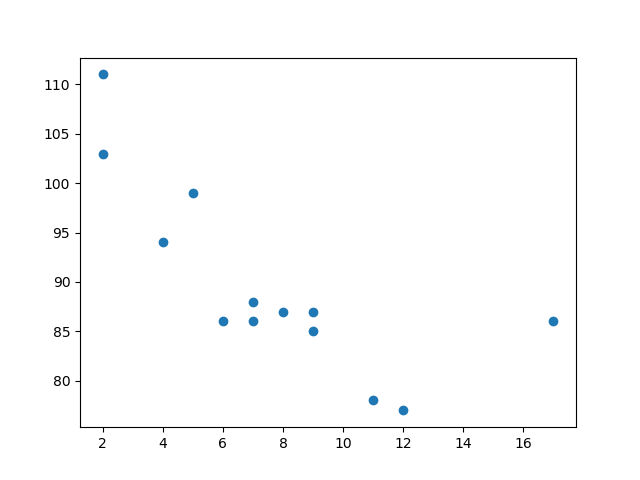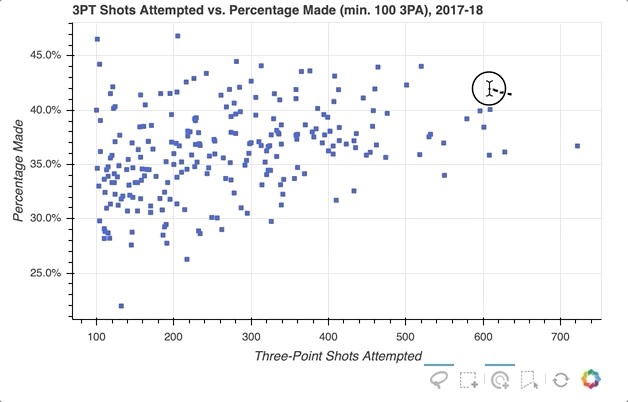

#Label point on scatter plot matplotlib full#
With annotations, you have full flexibility over positioning and styling, but you will have to add each label manually. Here's more on that topic.Īnother way to add selective labels to your scatter plot is throughĪnnotations. removing the story navigation – this is useful if you only have one slide.the styling, alignment, and placement of labels – to learn more about this, head over to this help doc.


Other things you might want to change include: To do this, click through to the underlying visualization via the "Current slide" button. Once you have placed your labels, you might want to enable the popups again. Clicking on the same point a second time will make the label disappear again. Just as you can specify options such as -, - to control the line style, the marker style has its own set of short string codes. Once you're in the story, you can click on the points that you'd like to display a label, and the label will appear. I've tried various different parameter options for this library but none of which seem to be having any effect at all. You can enable them again after setting your selective labels in the next step.Ĭreate a story in the top right corner. I want to use the adjusttext library to adjust the positioning of text labels for a matplotlib scatter plot, so that they don't overlap with eachother and are generally more readable. This makes adding the selective labels in the next step easier, as the popups won't interfere when you click on them in the story editor. the participant names as text labels for each point for xpos, ypos, label in zip(x, y, labels): ax.annotate(label. TIP: We recommend disabling your popups in the Popups settings before selecting the labels in your story. Next, in the Dot labels settings, select to Here, we added the y-axis value of the point as its label for each point on the scatter plot.To enable selective labels, make sure you've selectedĭot styles settings. The reason you have to ensure that SVG and not WebGL is selected for selective labels to work is that WebGL mode is still in beta and doesn't yet support this functionality. Plt.text(xi, yi, yi, va='bottom', ha='center') To label each point on the scatter plot, use the () function for each point in the plot. Let us highlight the select data points with a specific color that is different from other data points’ color. Example 2 – Label Each Point on the Scatter Plot Scatter Plot with Matplotlib in Python The outlier data points make the scatter plot really intriguing and you might want to highlight the outliers in a different color. Here, we used the va parameter to set the vertical alignment of the text to ‘center’ and the ha parameter to set the horizontal alignment to ‘center’ as well. Plt.text(2014, 62.33, 'USD crosses\n60 Rupee mark', va='center', ha='center') The scatter function is then used to construct a scatter plot with various colours using the x, y, and c parameters. For example, you can adjust the vertical and the horizontal alignment of the text, you can rotate the text, etc. You can customize the way the text label appears by using additional arguments.
#Label point on scatter plot matplotlib how to#
For example, let’s label the point (2014, 62.33). Matplotlib: How to Color a Scatterplot by Value Often you may want to shade the color of points within a matplotlib scatterplot based on some third variable. You can specify them either at artist creation or by calling the setlabel () method on the artist: ax. In case you only want to label a specific point (or points), use the () function only for those points. In this case, the labels are taken from the artist. Output: Example 1 – Label a point on the scatter plot

First, we will create a simple scatter plot.
Let’s now look at some examples of using the above syntax. Loop over the data arrays (x and y) and call plt.annotate (
 0 kommentar(er)
0 kommentar(er)
